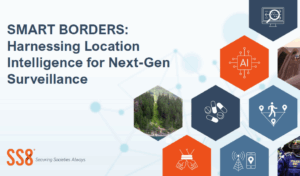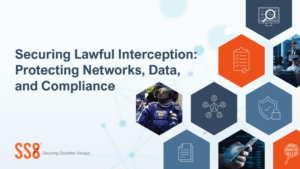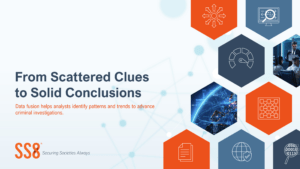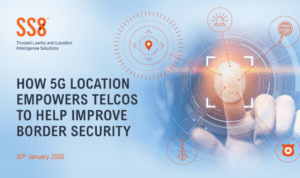
Discovery: On-Demand Data Analytics
Police agencies are grappling with an overwhelming volume of data that is often siloed across multiple systems, making it time-consuming and expensive to consolidate. SS8
Law enforcement agencies (LEAs) all over the world face intensifying personnel shortages. Most are unable to meet recruitment targets or even to compensate for ongoing retirements with new hires.
Ideally, intelligence analysts have the means to structure and correlate data to provide insights that advance their mission. But that vision is often defeated by noisy, siloed data and disjointed toolsets.
With 5G deployments ongoing and 6G some years away, 3GPP Release 18 provides an evolutionary step forward with the first 5G Advanced (5.5G) standard, enhancing performance, efficiency, and flexibility.
Controlling borders is vital to every country’s national interest, from managing immigration to preventing drug smuggling, human trafficking, and terrorism - but physical barriers are no longer enough.
In the coming years, AI is expected to dramatically accelerate the evolution of lawful intelligence, giving law enforcement agencies the ability to efficiently draw insight from data at unprecedented scale.

Police agencies are grappling with an overwhelming volume of data that is often siloed across multiple systems, making it time-consuming and expensive to consolidate. SS8

Border control agents need advanced tools to help resolve illegal trafficking. High-accuracy location, geofencing, and data fusion enable the real-time monitoring to disrupt smuggling operations.

Geofencing is a critical capability that builds context and insight around location intelligence, extending the value of location analysis across use cases.

Blanketing a nation’s borders with video surveillance is impractical. AI-powered Computer Vision improves efficiency by analyzing feeds in real-time, but not without high costs. Location intelligence helps.

The data involved in lawful intercept operations is highly sensitive. A compromise jeopardizes lives, justice, and national security. Best practices and standards help satisfy compliance and ensure integrity.

With a nearly unlimited variety of data sources available today, many of which are irrelevant to investigations, law enforcement analysts need help finding the needle in the haystack.

During missions, field agents often seize multiple devices, each holding crucial forensic location data – but if they can’t swiftly analyze the data in the field, the intelligence may be wasted.

5G networks allow operators to provide high-accuracy location data to government agencies to improve border security. Using geofencing and other techniques, agents can leverage this data to create alerts.

En esta presentación del Foro Virtual de Regulación de Telesemana.com, Javier D’Agostino explora cómo las soluciones de mediación avanzadas y escalables permiten a los CSPs cumplir con las regulaciones.

En esta sesión del 5G LATAM Virtual Summit, Javier D’Agostino de SS8 explica cómo la geolocalización 5G ayuda a cumplir con los nuevos mandatos y generar nuevas fuentes de ingresos.
THE DATA SILO DILEMMA FOR LAW ENFORCEMENT
How to Ingest, Filter and Query 5G Volumes
Webinar Presented by Kevin McTiernan